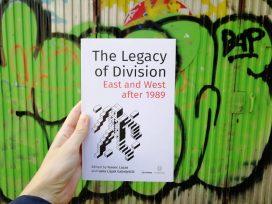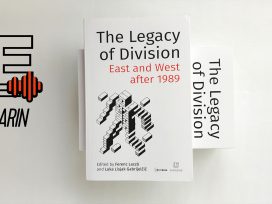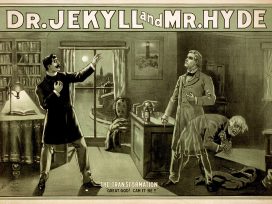The journey of revisiting 1989
A review of 'The Legacy of Division. East and West after 1989'
What causes the stark generational difference in people’s understanding of Soviet times? Is it only personal nostalgia, or maybe another set of expectations? Why didn’t the lifting of the Iron Curtain bring down the wall between East and West? Kinga Anna Gajda examines the perspectives offered in the Eurozine anthology ‘The Legacy of Division. East and West after 1989’.
Regional divisions based on geographical foundations are an unavoidable tool for studying geopolitical, cultural and discursive dependencies. The example of one such division is the idea of eastern Europe, which can be treated as a socio-economic or political construct. As a result, the term eastern Europe has not only been used in reference to geographical area, but also as a theoretical concept in academic, social and political debates. The most well-known was William Hagen’s conception of the East-West cultural/historical divide within Europe. In addition, there have also been attempts to divide the continent between North and South. Or, four parts: West, North, East (d’Orient) and South as was proposed by Larry Wolff, a history professor with the University of New York.
The East-West division, however, proved to be the most permanent. In the view of Walter D. Connor, a professor of international relations at Boston University, this is nothing new as he argues in his article Europe West and East: Thoughts on History, Culture, and Kosovo: ‘Historians have insisted on the difference between Eastern and Central Europe, careful to stake out the latter turf as theirs, or to use the term East Central Europe – sometimes without real specification of what West Central Europe might be.’
A gap to be filled
The authors of the essays in a collective publication entitled The Legacy of Division. East and West after 1989, edited by Ference Laczó and Luka Lisjak Gabrijelčič, try to answer the question on whether and how this division of Europe into East and West changed after the political transformation in 1989. Did the lifting of the Iron Curtain also bring down the wall between East and West? Have the accession of some central and eastern European countries to the European Union and the efforts of others blurred this old division? How has the perception and misconception of differences between the two halves of the continent changed since 1989? Over the past three decades, have the hopes of overcoming this division been fulfilled?
These questions seem all the more justified as they were asked on the 30th anniversary of the fall of the communist regime in Europe. The researchers agree that 1989 can be considered a key moment in the history of both Europe and the world, as well as the history of individuals on both sides of the wall. We constantly return to this date and the division into the world from before and after the symbolic moment of the fall of the Berlin Wall.
Some do it to negate the communist order and point to its negative consequences, others set off on a nostalgic journey to the past, the period of their youth. Others, especially the younger generation who do not remember much or almost anything, believe that communism is ‘an epoch that is finally closed’. Treating it like an open-air museum, they want to get to know it, guided by fashion, a kind of fascination with ugliness or kitsch. Characteristically, the discussion over the memory of communism and the time of the transformation has been taking place more outside the academic field than inside it. To fill this gap, and bring academic answers to some of these pressing questions, the editors of the The Legacy of Division invited a group of outstanding specialists from around the world, representing different disciplines within the social sciences. Among them are Aleida Assmann, Jan Zielonka, Florian Bieber, Richard Sakwa, and Karl Schlögel, to name just the few.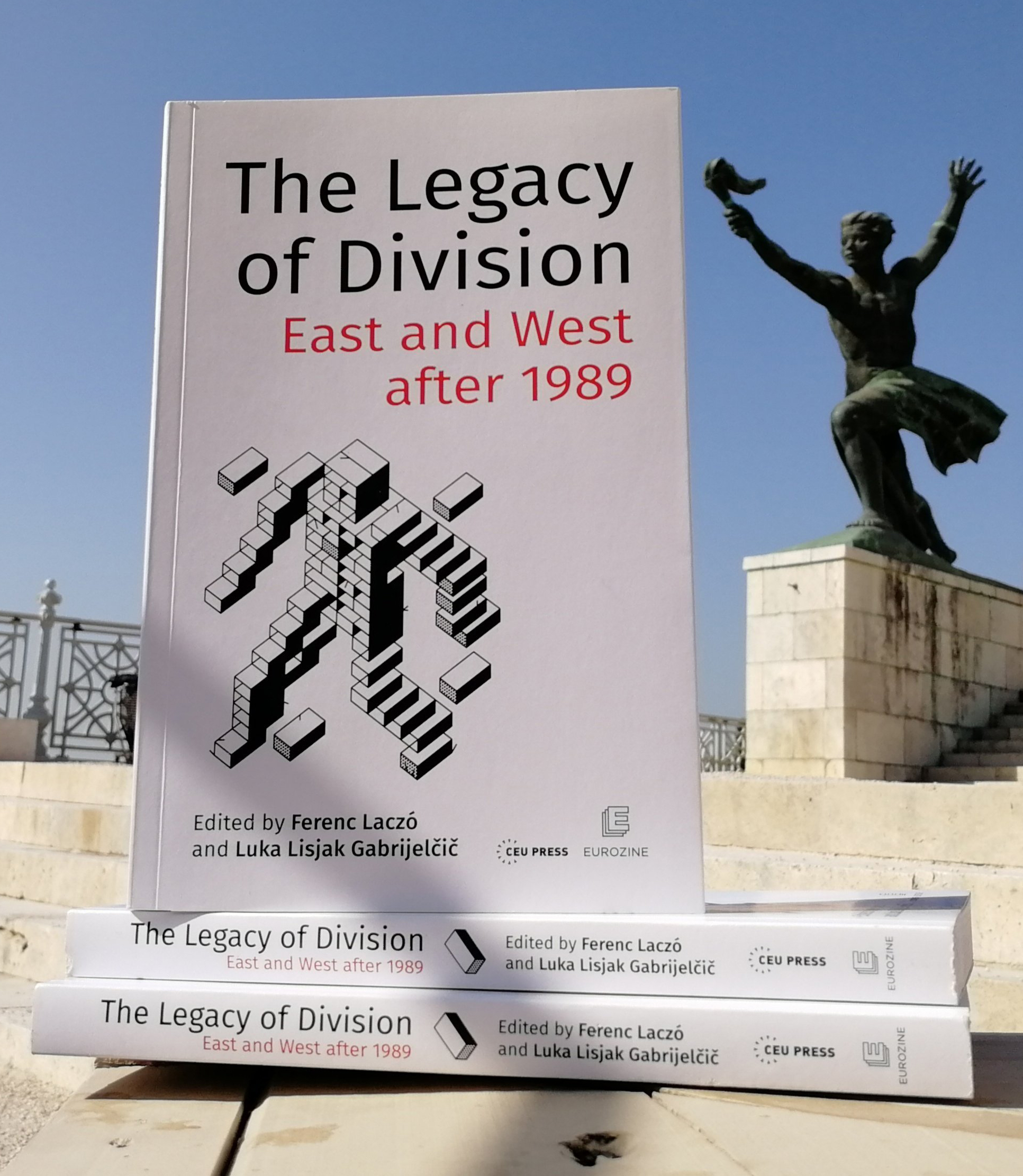
The volume enjoying some eastern European sunshine at the foot of the Hungarian Statue of Freedom. Photo courtesy of Dóra Papp.
More divided than ever before
After all, the differences in the narratives about 1989 are not only a reflection of generational differences or resulting from an emotional approach to the past, but also the intimate experiences and subjective interpretations of the world, as well as – or perhaps most of all – cultural differences overlapped by collective memory, ideology and aspirations of the political elite. In the same vein, the authors of this collection represent different approaches in their respective areas of academia. They base their analyses on different arguments, deconstruct their different narratives, undertaking them in the realm of their respective fields of research.
The starting point for the debate are the differences between the continent’s East and West, and a discussion on what today constitutes Europeanness at a time of the revival of xenophobia and populism in some parts of the continent. Indeed 30 years after the fall of communism we can see that not only have the last decades been a time of building democracy and capitalism and expanding EU borders into the East, but a time of many difficulties, including the 2008 financial crisis and the 2015 refugee crisis. It has been a time of intense globalisation and the era of Brexit; as well as that of rapidly expanding online technologies.
However, it was in recent years that we have seen dissatisfied citizens come to the streets of many cities throughout the continent to defend or oppose European values. There is no doubt that today’s Europe is more divided than before. The European states are now homes to EU supporters and opponents. And, moreover, the division of the continent into East and West has become more expressed. Recognising this, the editors write, in the introduction, the following: ‘In western Europe, voices regretting the EU’s supposedly careless and premature expansion eastwards began to appear on both sides of the left-right and liberal-conservative divides. In eastern Europe, nationalist forces continued to assert their “Europeaness”’.
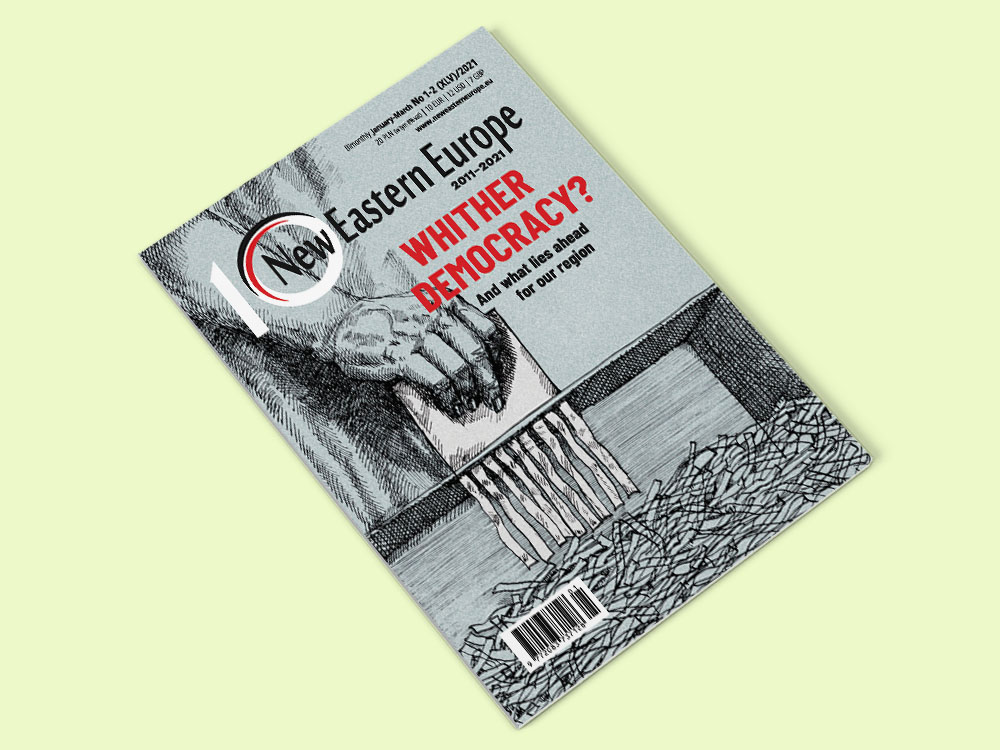
This article was originally published by Eurozine’s Polish partner journal New Eastern Europe. Their 2021/1-2 issue is titled ‘Whither democracy?’ Review forthcoming.
Overtaken by western investors
However, the volume does not offer any answers to the question of where Europe has come three decades after the transformation or where it is going. Rather, it invites you to a debate and to consider the many different arguments the authors have with each other. As a result, we do not get a clear answer as to whether there will be a convergence of the two parts of Europe, or what such convergence could mean to the European project. Instead, we are offered a range of answers. It is thus the reader who must decide which arguments sound most persuasive. The editors defend this decision through the metaphor of a journey – one that takes readers to the different corners of Europe and through the different fields of knowledge. The proposed paths may seem mistaken to some, while others might find them worth discovering; while other readers might say that these paths are already well-trodden.
This journey, however, goes along the border between the eastern and western parts of Europe. Thereby it is evidence that the divide between these two halves is being recreated or even deepened. At the same time, the global success of the liberal democratic West has proved illusory. As some of the authors note, the accession of many eastern European countries to the EU was supposed to blur the divide between East and West. However, it overlooked that the collapse of socialism overlapped with the transformation of capitalism in the West. Thus, the opening of borders and the freedom of movement also meant that many multinational corporations moved into eastern markets in search of cheaper labour. In the end, eastern European capitalism became heavily dependent on western investors.
As a consequence, it inhibited or marginalised the emergence of entrepreneurship in eastern countries. Many of its workforces left in search for a better life in the West, thereby weakening their domestic labour markets. Initially delighted with western capitalism, eastern European states tried to imitate the West. With time, this so-called policy of imitation, gave way to rebellion, bringing on new political and social challenges. It became humiliating to be an imitator in a world that affirmed originality. In consequence, the earlier demarcation lines of division began to become clearer – the separation between democracy and communism, between freedom and totalitarianism (typical of the Cold War era), has been replaced by the division between societies that are democracies and those aspiring to be one.
The division of two labour markets has not changed in any way. The migration of professionals and skilled workers continues from East to West, with the difference that after some eastern countries joined the EU, they also became places where eastern neighbours came in search of employment and better living conditions. Moreover, as we can gather from the voices in the volume, the fall of the Iron Curtain changed not only the East, but the West. However, this topic is rarely raised in a wider public debate where the main emphasis is still put on the East’s willingness to catch up with the West. Even today, there is still little recognition of how much the East has to offer.
Stigma
The second journey set out in this volume meanders between the East and the West, proving evidence that this division is a stereotype maintained through duplication. The various contributors emphasise that, despite the fall of the Iron Curtain, eastern Europe is still a part of the common European narrative, although it is not clear where it begins and where it ends. They also point out that the language used to describe post-communist countries and their reality bears the hallmarks of stigma: it is full of stereotypes and shows how old habits die hard. The most poignant in this regard is the testimony of Jan Zielonka, who rightly observes: ‘I was never a member of the communist party, yet I am destined to die as a post-communist according to the East-West narrative. I have several Italian colleagues who were members of Partito Comunista, but they would not see themselves or their country as carrying the stigma of post-communism, which is attached to the eastern part of Europe.’
Zielonka goes on to argue that there are many other simplifications which are unfair or untrue, yet exist. The assumption, for example, that eastern European states have weaker economic development than western ones despite the fact that the Polish economy is developing at least twice as fast as the Greek one. Zielonka also points out that eastern European states have more in common with western states than with other states in their region. Here he mentions Poland again arguing that when it comes to family policy it is more similar to Italy or Spain than the Czech Republic. Therefore, a search for similarities between eastern and central European countries is an oversimplification – as Zielonka rightly argues they do not even have the same eating or drinking traditions.
Not a whole
Zielonka ultimately concludes that Europe is a complex maze with many dividing lines – not just between East and West. The journey through the meanders of borders that he and other contributors navigate does not run along the border between the East and the West. It goes along the many borders between countries where right-wing parties are strong (including Austria, the Netherlands, Denmark or Sweden) and where left-wing parties are dominant; between countries ruled by illiberal parties and those where populists have little appeal, between countries that accept refugees and those that do not, between countries where, due to their geographic location, there are many refugees and those where they are not, between creditors and debtors, and between religious boundaries.
It seems that the journey ends in a multicultural and multi-directional Europe, where borders are interpreted and discussed each time, and the demarcation is shifted according to differences. After all, the differences between countries can be defined on the basis of differences in political doctrine, their sense of national pride, adherence to human rights and gender equality. It can also depend on their approach to multiculturalism and tolerance or to cultural heritage. As we can gather from this volume of essay, one thing is certain and not encouraging: The European Union is still not whole and the term ‘European’ still has many definitions.
Although the various authors give different answers to these questions, the purpose of their journey seems to be the same and it leads to an important conclusion. When talking about the last three decades, no one wanted to point out what went wrong. Instead, there is still a focus on what can be done to make today’s Europe different. There are ideas of replacing hegemony with pluralism and solidarity. The contributors note that there are new opportunities to rediscover pluralism and they emphasise that normalcy in the EU is not about the pressure of mass westernisation and individualisation, but about recognising the importance of cultural heritage across so many different cities and regions.
Finally, they emphasize that we now have a new political generation. Its representatives will go their own way and set on their own journey. For this new generation, The Legacy of Division. East and West after 1989 will be an excellent resource. One that not only can teach them about the roads already travelled, but allow them to find themselves in the labyrinth of today’s Europe and to reflect on how to answer the question: What is our future?
Published 10 February 2021
Original in English
First published by New Eastern Europe 1-2/2021
Contributed by New Eastern Europe © Kinga Anna Gajda / New Eastern Europe / Eurozine
PDF/PRINTNewsletter
Subscribe to know what’s worth thinking about.
Related Articles
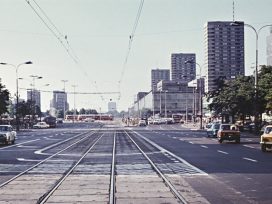
Private enterprises founded by diaspora Poles with seed capital from the West produced a range of consumer goods for the domestic market in the late Polish People’s Republic, blowing a ‘wind of change’ into the planned economy over a decade before the transformation.
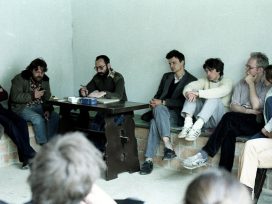
Rhapsody of emancipation
On the interventions of Gáspár Miklós Tamás
An anarchist philosopher turned right-leaning libertarian and anti-capitalist critic of the illiberal order, Gáspár Miklós Tamás (1948–2023) embodied what east European thinkers have tended to be best at: making paradoxes intelligible.
